Lately, I have received a lot of queries about whether the Blueair 411 Auto is a better choice for buying than the Xiaomi Mi 3H air purifier.
Although the Xiaomi has many more advanced options, covers larger rooms, and is generally superior to the Blueair 411 Auto, I decided to test and compare them in detail. Firstly, I want to mention that Xiaomi Mi 3h covers rooms up to 484 sq. ft., while the Blueair 411 Auto covers rooms up to 190 sq. ft.
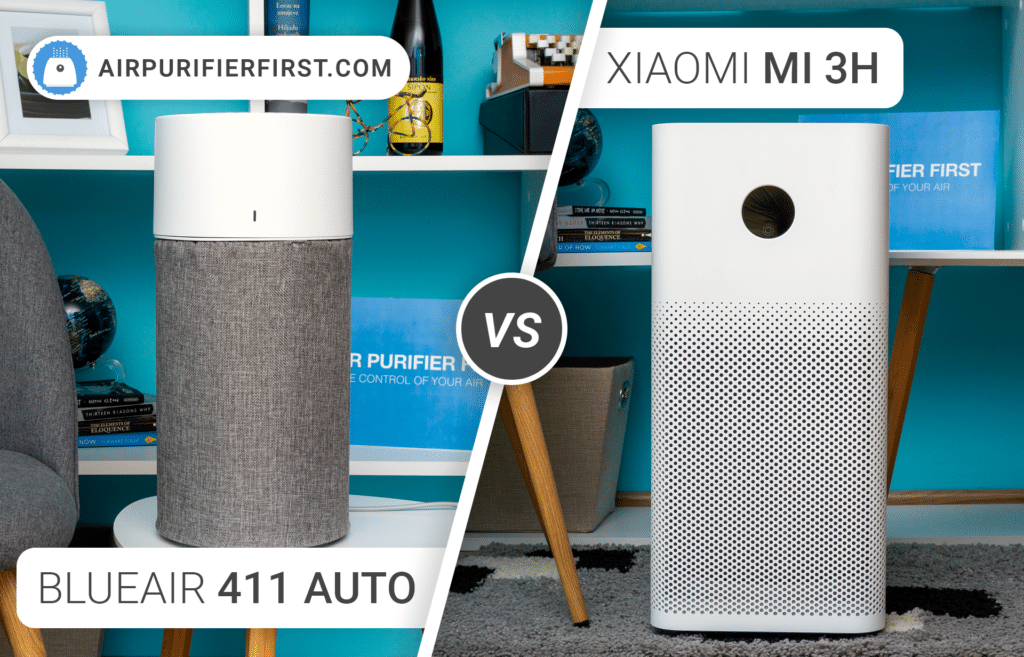
Table of Contents
They both are built of plastic, which is of okay quality. What I like about the Blueair is the changeable pre-filter available in five colors. Also, the Xiaomi is a huger device, so keep in mind that you will need more space in your room if you opt for it.
Furthermore, I want to say that they both use high-quality filters. Blueair uses a three-stage filtration technology with HEPASilent as an additional stage, while Xiaomi uses a classical three-stage filtration technology.
How did they perform on performance tests, which one uses better filters, and which one is an overall better buying option you will find out in the following article.
Blueair Vs Xiaomi Specifications
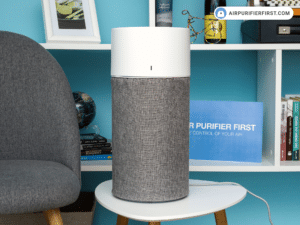 |
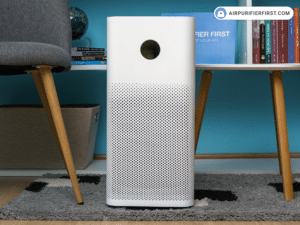 |
|
| Manufacturer | Blueair | Xiaomi |
| Model | 411 Auto | Mi 3H |
| Dimensions | 7.9 x 7.9 x 16.7 inches | 9.5 x 9.5 x 20.5 inches (24 x 24 x 52 cm) |
| Room Coverage (4.8 ACH) | 190 sq. ft. | 484 sq. ft. (45 m2) |
| Performance Ratings | ||
| Filtration Technology | Washable Pre-filter, Particle Filter, and Carbon Filter | Pre-filter, True HEPA, and Active Carbon Filter |
| Filter Replacement Indicator | Yes | Yes |
| Filter Longevity | about 6 months | 12-month |
| Power | 10W | 38W |
| Operating Costs Ratings | ||
| Fan Speeds | 3 – Night Mode, Everyday Mode, Boost Mode | 5 – Sleep Mode, Speed 1, Speed 2, Speed 3, and Max Speed |
| Air Quality Sensor | Yes | Yes |
| Air Quality Indicator | Yes | Yes |
| Auto Mode | Yes | Yes |
| Smart App | No | Yes |
| Manual Mode | No | Yes |
| Display Off | No | Yes |
| Timer | No | Yes |
| Noise Levels | 41.6 – 61.2 dBA | 40.9 – 65.4 dBA |
| Noise Ratings | ||
| Warranty | 2-year | 1-year |
| In-Depth Review | Blueair 411 Auto | Xiaomi Mi 3H |
| Price | Check Price on Amazon | Check Price on Amazon |
Features Overview
If we compare features, it is clear that the Blueair 411 Auto can’t parry Xiaomi. Simply, the Blueair is a minimalistic air purifier with not that many advanced options, while the Xiaomi is a more advanced air purifier with many options built in.
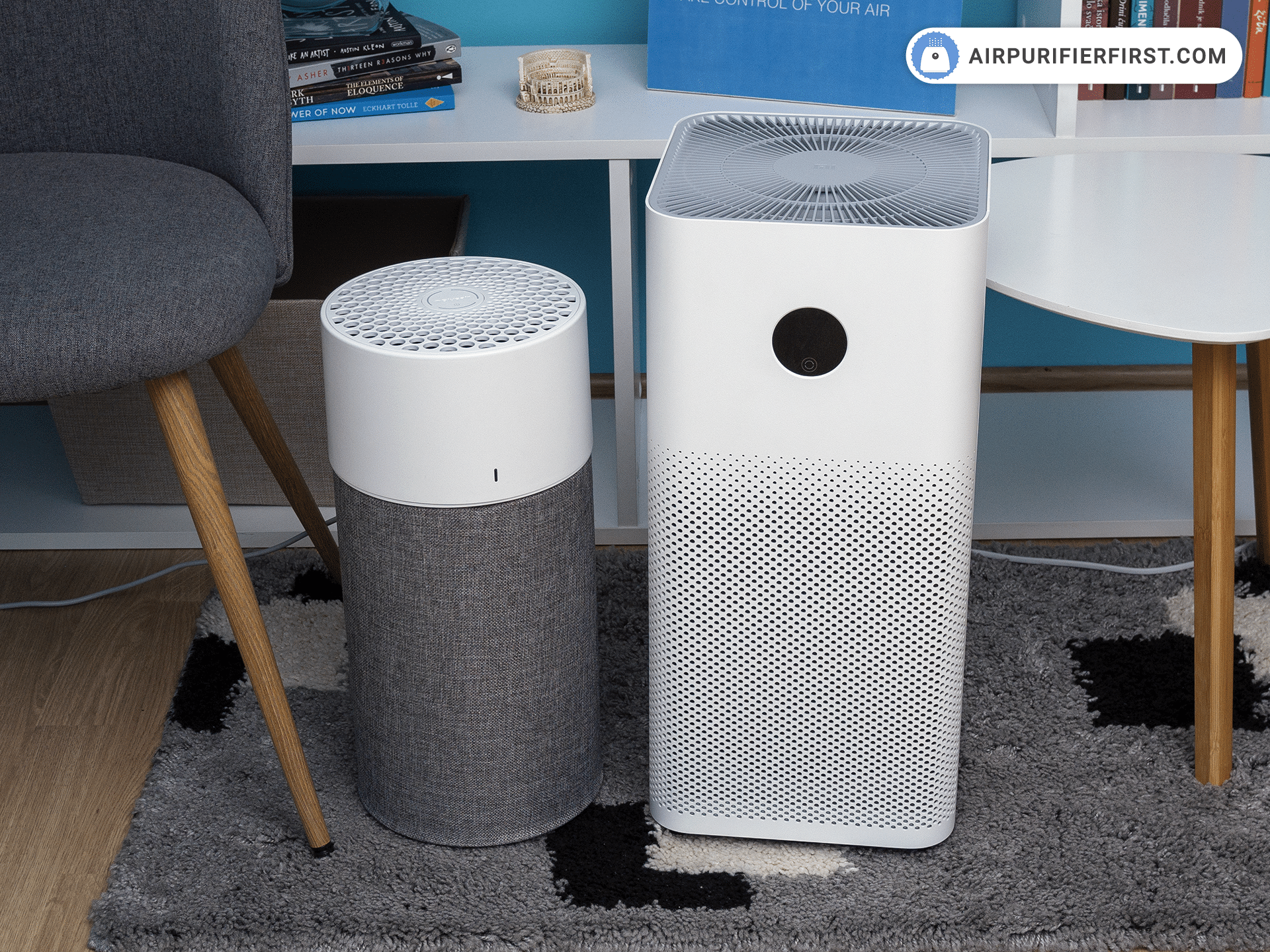
I put all these on paper and sum up all the most essential features of these two air purifiers, which you can find explained in detail in the following sections.
Air Quality Sensor and Indicator
Blueair has improved its product lines with new and more innovative models in the past few years. The most significant difference in new models is in the air quality sensor, which is now the main part of models with the word “Auto” in their name. The air quality sensor on Blueair 411 Auto detects dust particles in real-time. Those readings are used to show the current air quality through the air quality indicator located on the front.
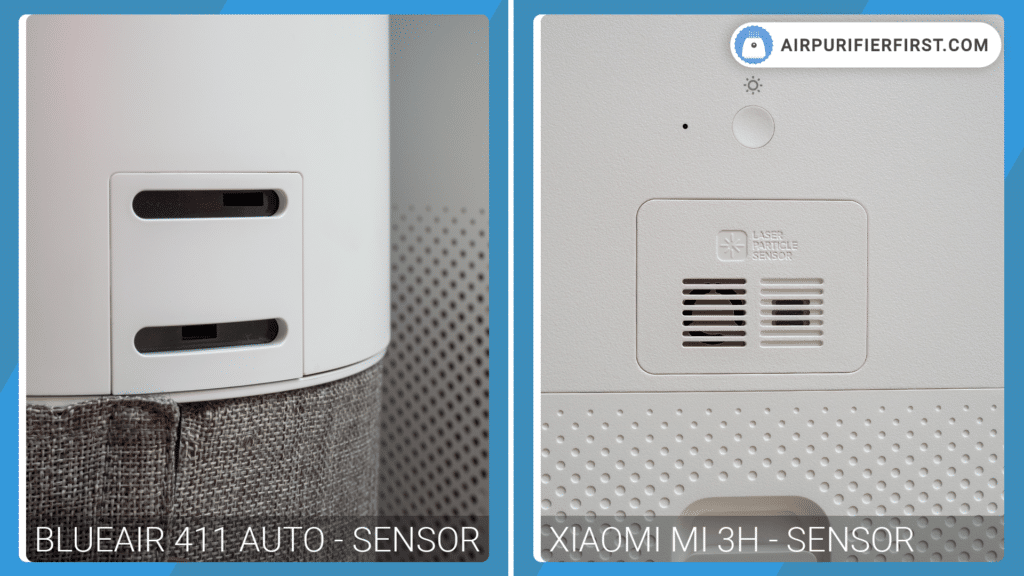
The Xiaomi Mi 3H has an air quality sensor as well. It detects dust particles in real-time and works with other features such as air quality indicator, PM2.5 indicator, and auto mode.
Overall, having an air quality sensor is a big step upward and a great feature that will make it much easier to use any of these devices daily.
Auto Mode
I already said that the air quality sensors of these two air purifiers work in combination with an air quality indicator, which I explained above, and auto mode.
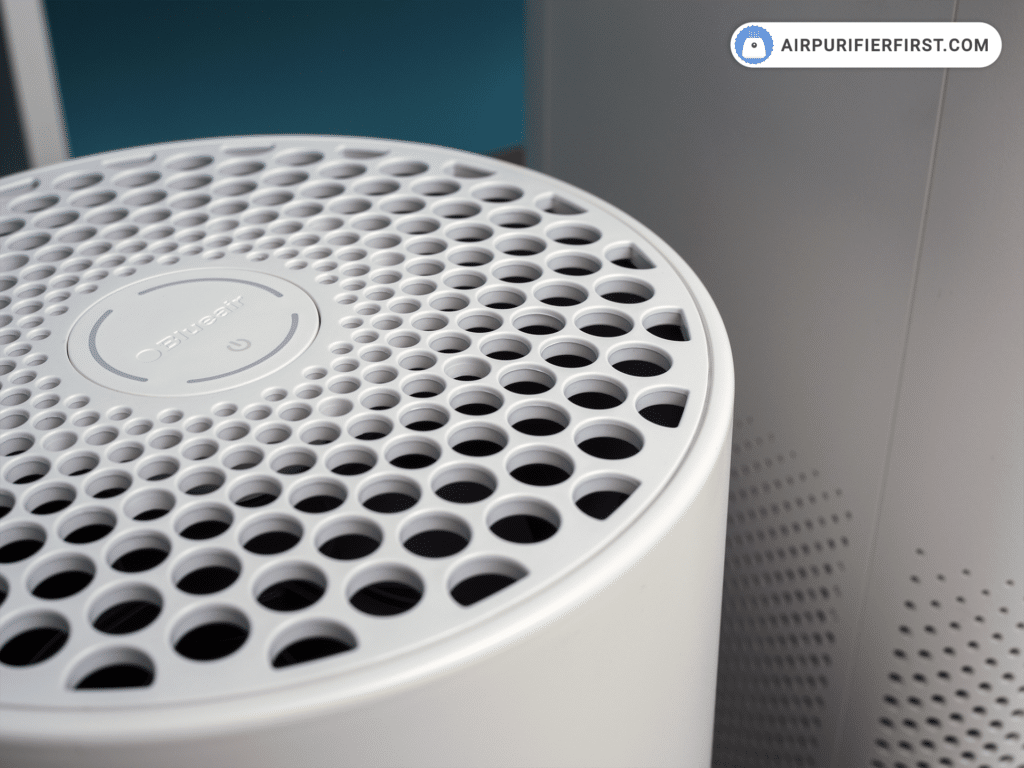
What is an auto mode? Basically, when the air purifier is switched on auto mode, it will change the fan speed (working mode) based on the current air quality, which it gets from the air quality sensor.
Temperature and Humidity Meter
In addition to the air quality sensor, the Xiaomi Mi 3H has a temperature and humidity meter, two amazing sensors that read the current temperature and humidity in the air. In that way, you will get a more detailed picture of the current air quality in your room.
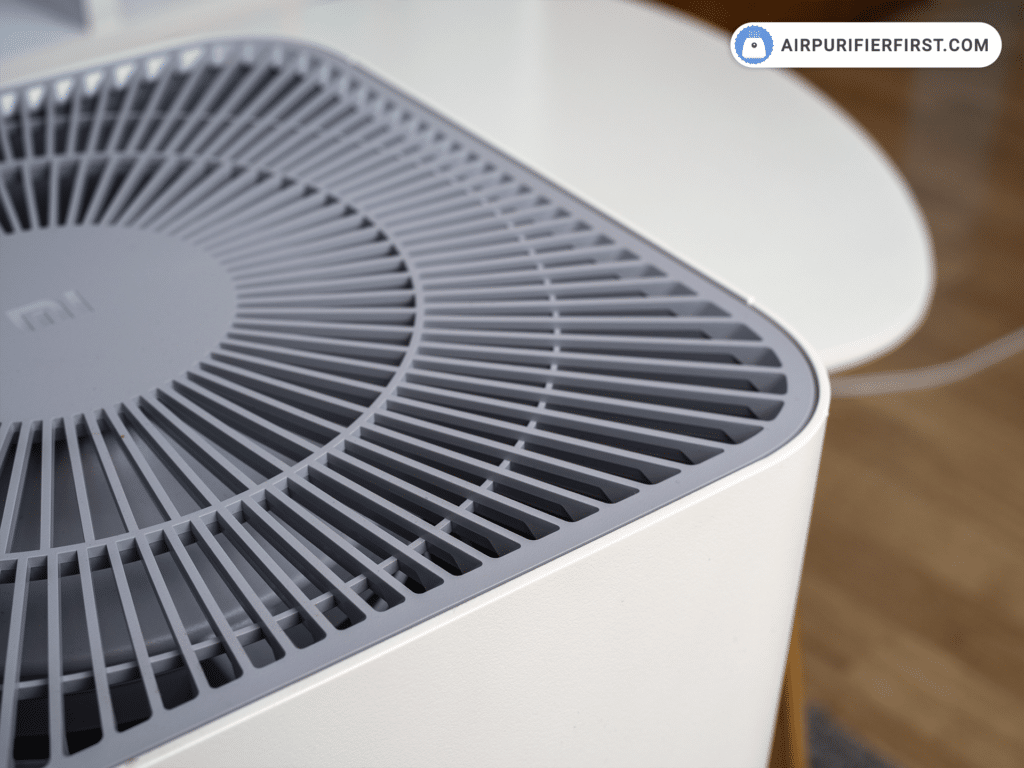
You can read these sensors’ data through the smart app or on a display located on the front of the device.
Filter Reset Indicator
What I also like about these two air purifiers is that they have a filter reset indicator, which will notify you when it is time to replace the old filters.
On the Blueair 411 Auto, the filter reset indicator is located just above the control button and lights red when active. On Xiaomi, this indicator is shown on the display when turning the device on, and you can check the filter life at any time through the smart app.
Smart App
Another option available only on Xiaomi is a smart app. Simply, Xiaomi Mi 3H can be connected to the Mi Home smart app, which is available for Android and iOS devices.
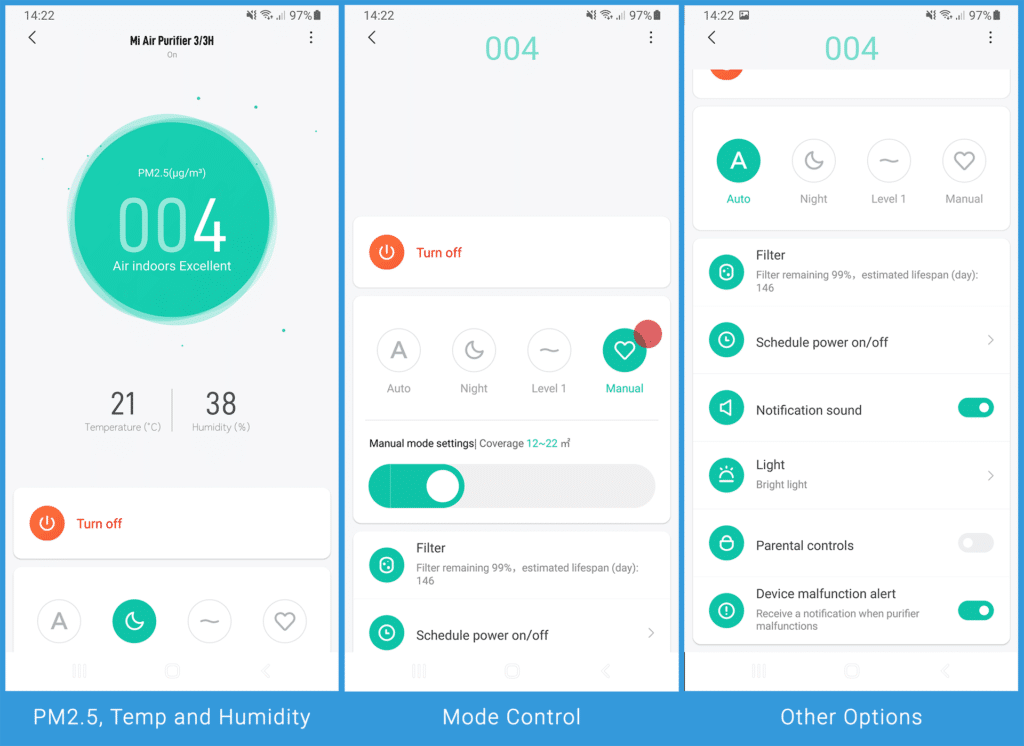
This is a handy feature that not only enables the remote control of the device but also unlocks many advanced options available only through the app.
Airflow
Although Blueair 411 Auto is cylindrical, and the Xiaomi Mi 3h is rectangular, these two devices have almost identical airflow.
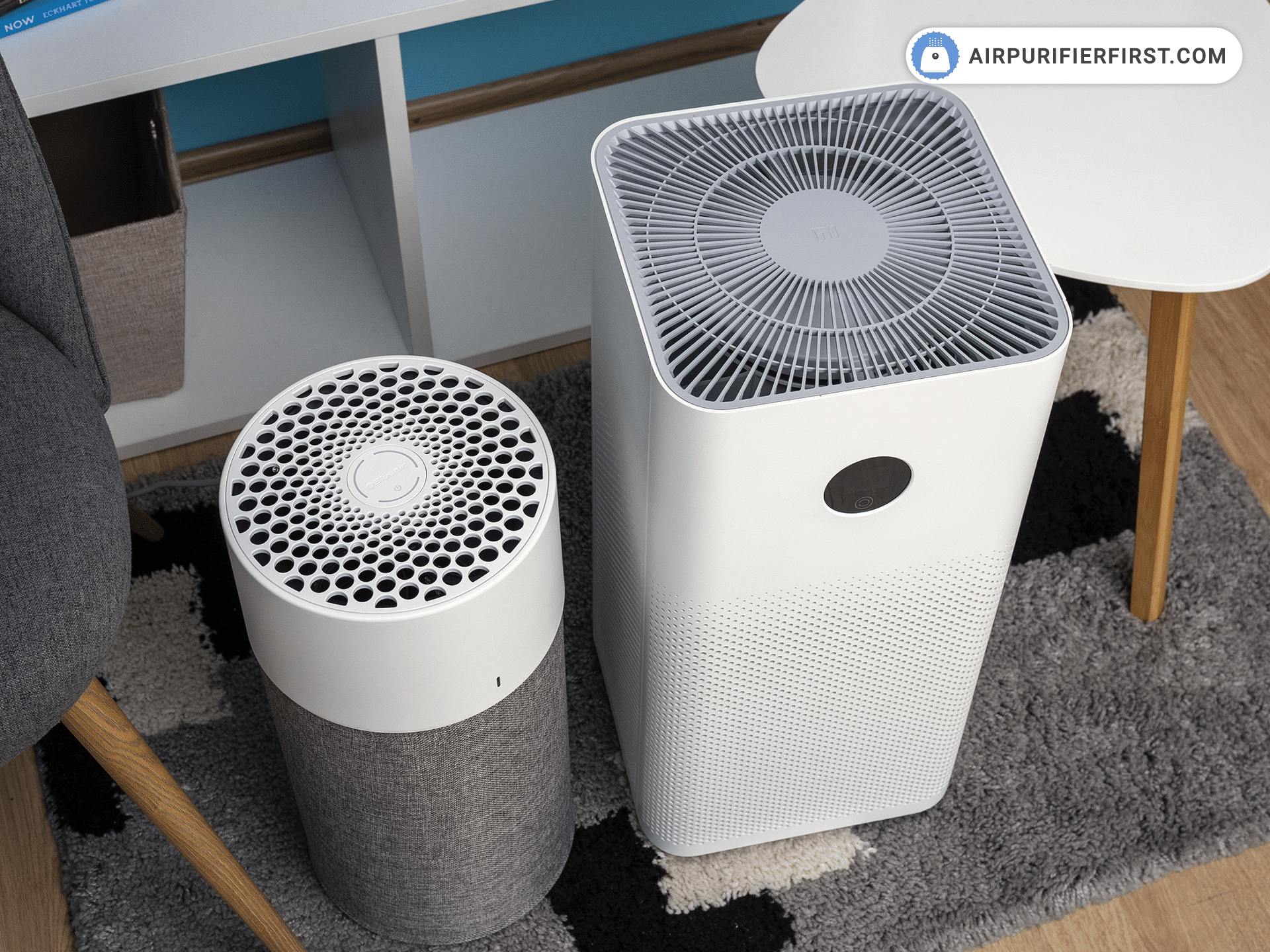
Both draw air in through the openings on the bottom part of the device, which is then filtered and exits through the openings on the top.
Warranty
Concerning the warranty, I want to say the Blueair is a bit more generous as it comes with a 2-year warranty, while the Xiaomi comes with just a 1-year warranty.
Filtration Technology
The first thing I would like to emphasize when comparing filtration technology is that Xiaomi Mi 3H uses a 3-stage filtration technology consisting of a nylon mesh pre-filter, True HEPA filter, and activated carbon filter. In contrast, the Blueair 411 Auto uses a 4-stage filtration technology consisting of a washable pre-filter, particle filter, carbon filter, and HEPASilent technology.
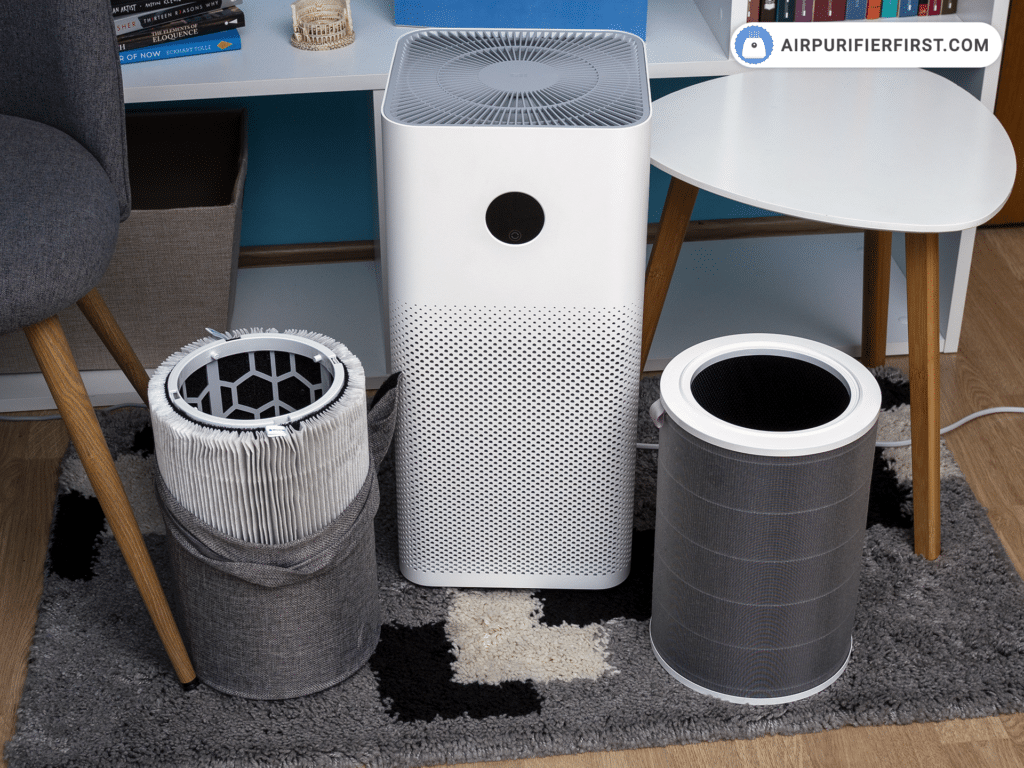
HEPASilent technology is essentially an ionizer that is always active and cannot be turned off. But, please keep in mind that the Blueair 411 Auto is CARB certified, which means it doesn’t produce an unallowed amount of ozone and is safe to use.
I want to point out that having a True HEPA filter is a huge benefit of the Xiaomi over the Blueair, mainly because the HEPA filter is the most important filtration stage, and the True HEPA is prooved as more efficient than standard HEPA filters.
What’s more, Xiaomi uses a pellet-based carbon filter, which is also much more efficient than the fibrous filter coated with carbon as it is on Blueair.
However, the Blueair has its trump card, a washable pre-filter, which is also available in five different colors.
How To Replace Filters?
Since all the filters on these two air purifiers, except the washable pre-filter on Blueair, aren’t washable, you have to change them occasionally.
On the Blueair 411 Auto filter lasts on average about 6 months, while on Xiaomi Mi 3H, it lasts on average between 6 and 12 months.
The replacing filter process is straightforward, and I explained it in detail in individual reviews, which you can see on the links below.
Noise Tests
The noise test is where Xiaomi showed why it is a top-notch air purifier. Due to the fact it has more fan speeds, and that has the ability to adjust the fan speed through the smart app manually, it was somehow expected that the Xiaomi will be quieter than the Blueair 411 Auto.
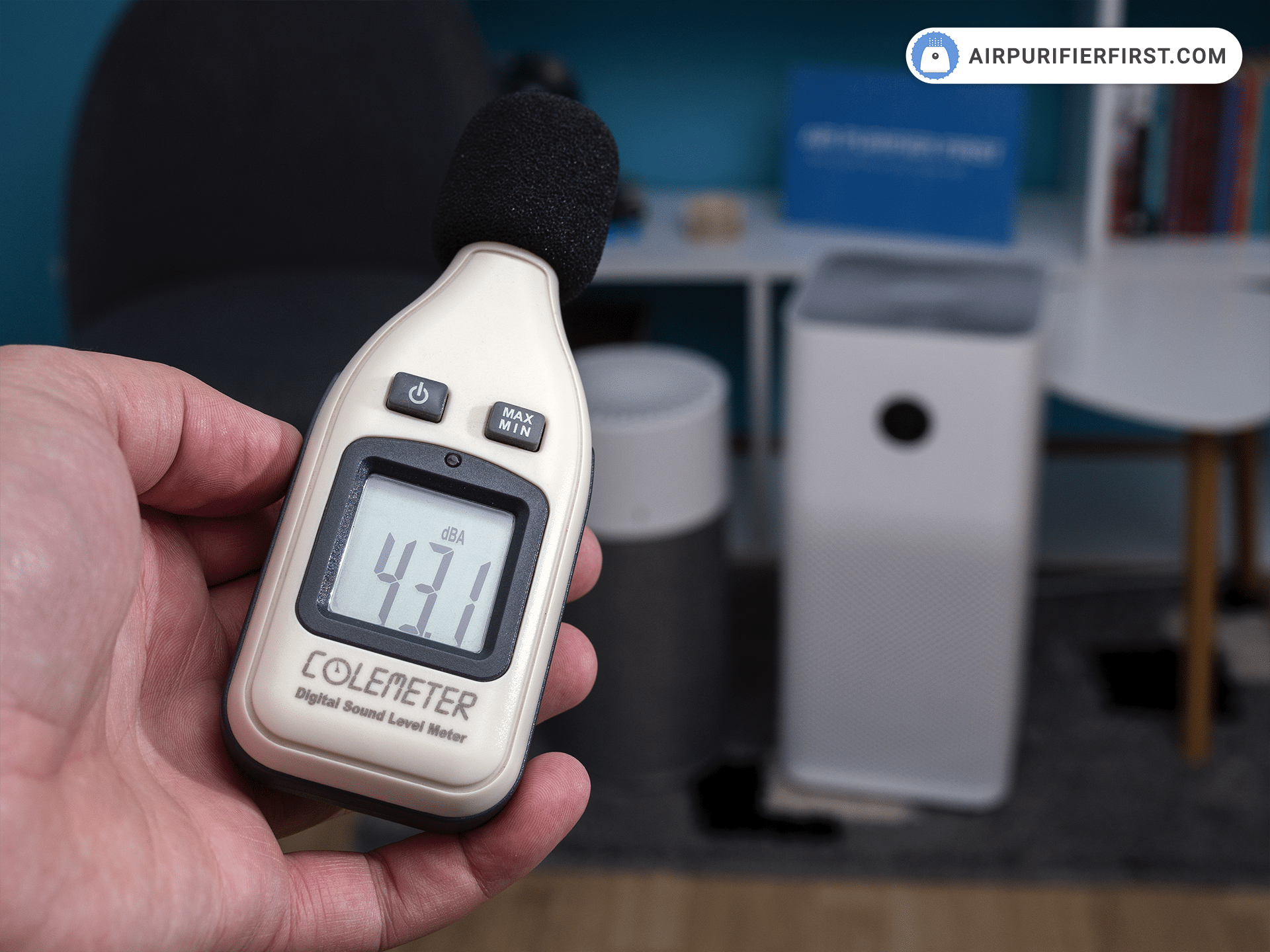
Besides, the Xiaomi Mi 3H has a sleep mode, where it produces a sound of just 40.9 dBA, while the Blueair 411 Auto produces a sound of 41.6 dBA at its lowest speed.
| Product | Noise Range (dBA) |
|---|---|
| Blueair 411 Auto | 41.6 – 61.2 dBA |
| Xiaomi Mi 3H | 40.9 – 65.4 dBA |
In addition to all mentioned, the Xiaomi motor works more pleasant, especially at the max speed, on which Blueair is a bit too loud.
Performance Tests
The most interesting test in this comparison is the performance test, especially because Xiaomi covers much larger rooms than Blueair.
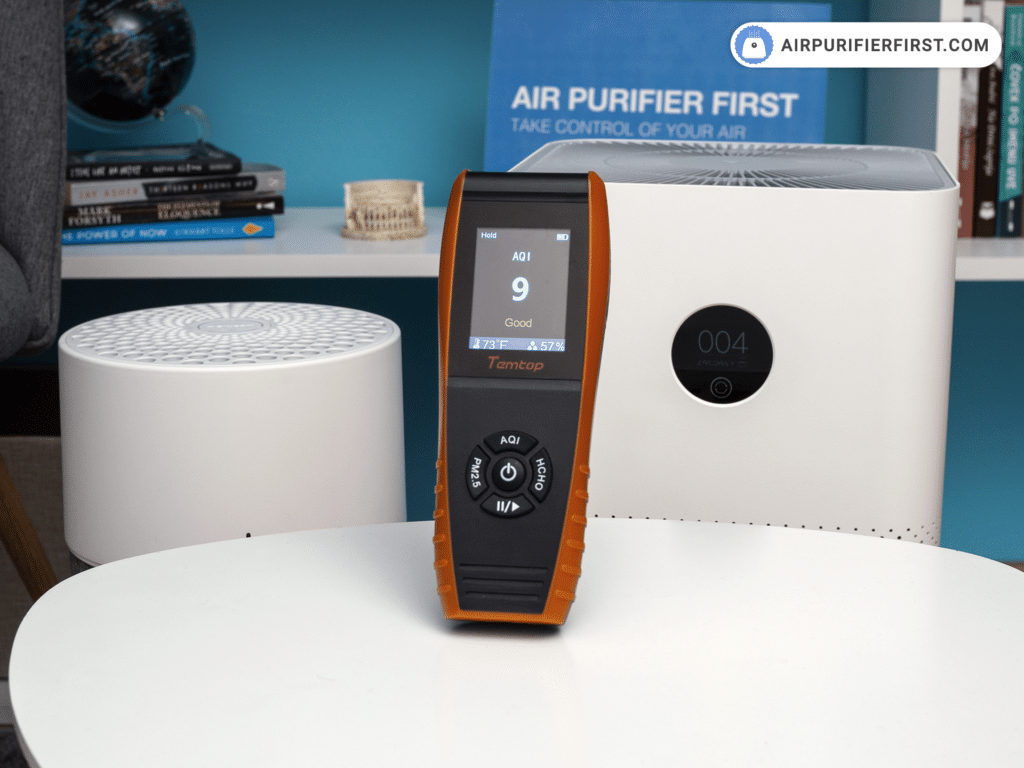
Because of different room coverage, I have tested them in a few different tests to get more credible results and to make a more precise comparison of their performance.
In addition to the tests that I will show below, I tested these two devices daily, and what I noticed and what I think is necessary to highlight is that Xiaomi has proven to be better at neutralizing bad odors.
320 sq. ft. Room Tests
In the first test, in a 320 sq. ft. room, these two devices have shown excellent results.
The Xiaomi Mi 3H improved the air quality by about 95% in 60 minutes of operation, at max speed, while the Blueair 411 Auto improved the air quality by about 91% for the same time and in the same conditions.
320 sq. ft. Room
* Data measuring time is 60 minutes.
Other Tests
In addition to the previously mentioned tests, I tested the Blueair 411 Auto in a room size of 194 sq. ft., where for 60 minutes of work at max speed, it improved the air quality by about 94%, which is a remarkable result!
I tested Xiaomi Mi 3H in a room size of 560 sq. ft., in which this air purifier improved the air quality by about 90%, for 60 minutes, working at the max speed.
Overall, both, Blueair 411 Auto and Xiaomi Mi 3H have made fantastic results on performance tests and proven to be top air purifiers.
Operating Costs
Probably, many of you expected that the Blueair 411 Auto is a much smaller power consumer, as it uses a motor of just 10W, which is almost four times less than the 38W, which is the power of the Xiaomi Mi 3H motor.
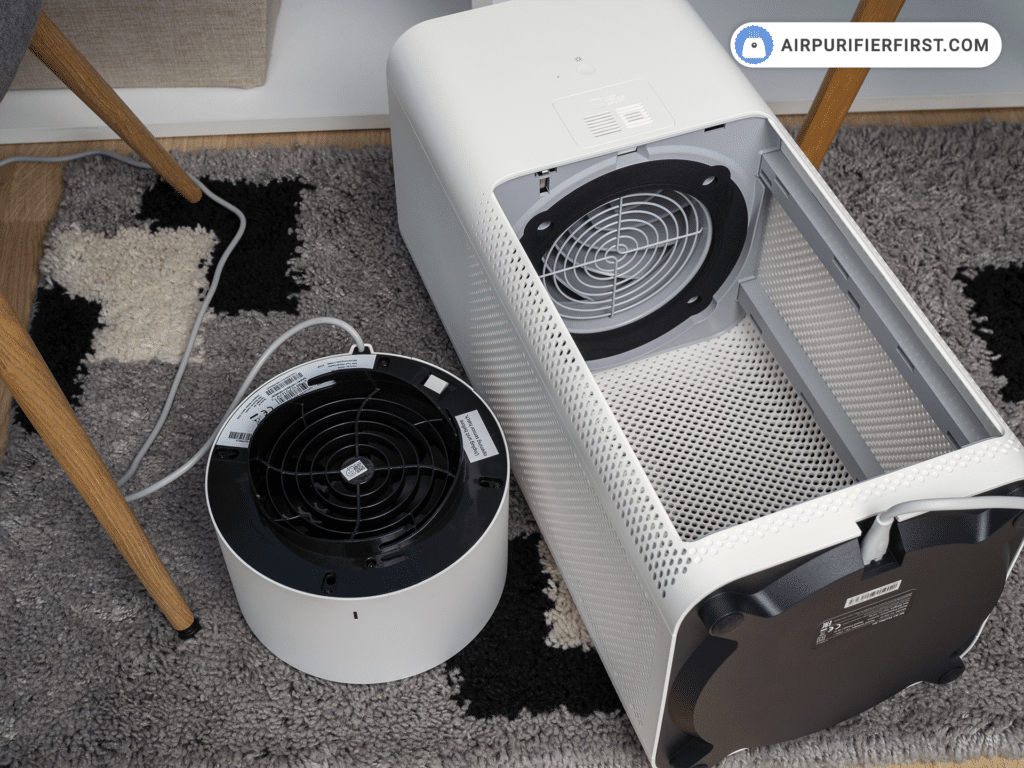
This means that if you left these two devices to operate 24 a day, at max speed, for a month, your electricity bill would be increased by about $0.8 in the case of the Blueair 411 Auto and by about $3.4 in the case of Xiaomi.
| Product | Wattage Range (W) |
|---|---|
| Blueair 411 Auto | 1.9 – 9.1W |
| Xiaomi Mi 3H | 0.9 – 39W |
When we sum up the price of replacement filters and the power usage, and when we add to that the filter’s longevity, the Blueair 411 Auto is much cheaper for maintenance annually than the Xiaomi Mi 3H.
Which One Does It Better?
I think from the very beginning, this battle was evident.
Although the Blueair 411 Auto is much more affordable to maintain, and even though it performed pretty well in performance tests, I choose the Xiaomi Mi 3H as a better buying option and the winner in this battle.
Xiaomi Mi 3H has a much larger filter, uses a True HEPA filter, has a pellet-based carbon filter, has plenty of advanced options, and also made outstanding results in performance tests.
In essence, although the Xiaomi Mi 3H is a better choice to buy, you won’t make a mistake even if you opt for a Blueair 411 Auto. Personally, I would recommend Blueair for smaller rooms, in which it could fit better and be more beneficial than Xiaomi.
If you have any questions, do not hesitate to ask them in the comments box below.
Leave a Reply